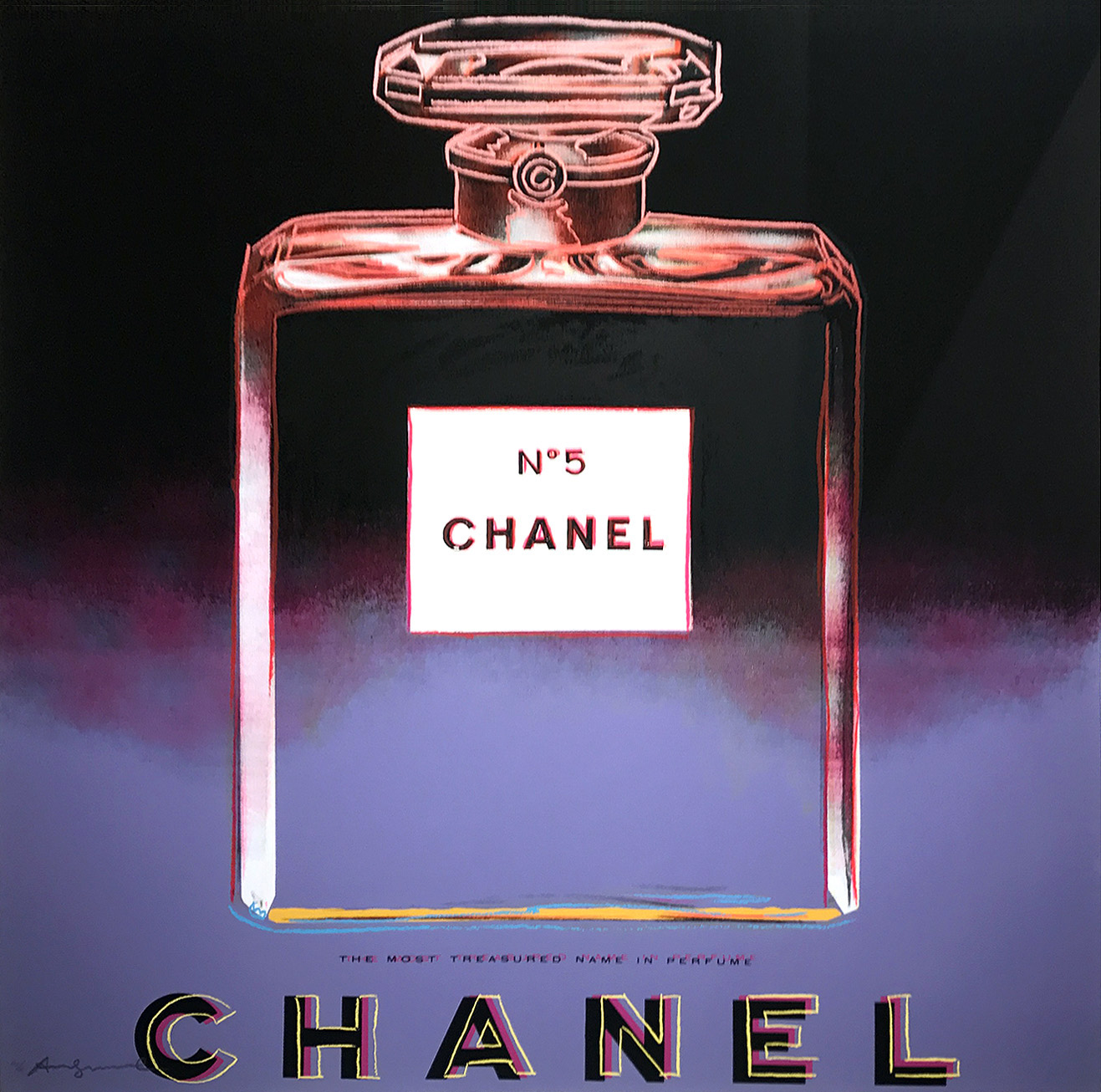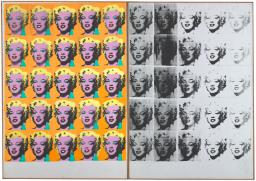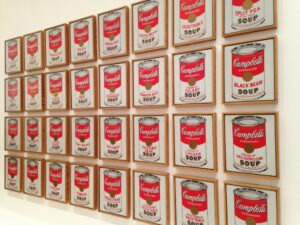Top Picks: My Favorite Sell Andy Warhol Works
My Favorite Andy Warhol Works: Top 10 Collection
Key Highlights
- Andy Warhol’s original artworks are highly sought after and have become iconic symbols of pop culture.
- His artworks explore themes of celebrity, consumer culture, and the intersection of art and everyday objects.
- Some of his most famous artworks include Marilyn Diptych, Campbell’s Soup Cans, Gold Marilyn Monroe, and Silver Car Crash.
- Warhol’s artworks continue to influence contemporary artists and hold significant value in the market.
- Collecting Andy Warhol artworks requires careful consideration of authenticity, provenance, and market trends.
Introduction
Andy Warhol is one of the most renowned artists of the 20th century and a key figure in the pop art movement. His unique and innovative approach to art, influenced by consumer culture and mass production, made him a revolutionary force in the art world. Warhol’s artworks have become iconic symbols of pop culture, permeating popular culture even today. From his Marilyn Monroe paintings to his Campbell’s Soup Cans, Warhol’s original works have become highly sought after by collectors and commercial artists around the world. At SellMyWarhols, I have had the opportunity to work closely with Warhol’s original works and have compiled a list of my top 10 favorites.
10 Essential Andy Warhol Artworks for Collectors
Andy Warhol’s artworks have had a lasting impact on the art world and continue to captivate collectors and art enthusiasts. Here are 10 essential Andy Warhol artworks that every collector should consider adding to their collection:
1. Marilyn Diptych (1962) – A Symbol of Pop Culture
One of Andy Warhol’s most famous artworks, Marilyn Diptych, is a powerful representation of pop culture and the allure of celebrity. Created in 1962, this artwork features 50 images of Marilyn Monroe, the iconic Hollywood star. Warhol used a publicity photo of Marilyn Monroe from her film “Niagara” as the source image for this artwork. The repetition of Marilyn’s image across the canvas and the use of contrasting colored and black and white canvases creates a striking visual effect. Marilyn Diptych reflects both the public persona and the private self of Marilyn Monroe, highlighting the dichotomy between fame and vulnerability. This artwork, which was also famously shot by performance artist Dorothy Podber in 1964 with a revolver, has become an enduring symbol of pop culture and continues to fascinate viewers with its vibrant imagery and exploration of celebrity obsession.
2. Campbell’s Soup Cans (1962) – Icon of Consumerism
Andy Warhol’s Campbell’s Soup Cans is one of his most iconic and influential series of artworks. Created in 1962, this series consists of 32 individual canvases, each depicting a different flavor of Campbell’s soup. By choosing an everyday household item, Campbell’s Soup, as the subject matter for his artwork, Warhol challenged traditional notions of art and elevated the mundane to the level of high art. The Campbell’s Soup Cans series is a visual representation of consumer culture and mass production, reflecting the influence of advertising and commercialism in society. This series propelled Warhol to fame and solidified his position as a leading figure in the pop art movement. The Campbell’s Soup Cans artworks, also known as Campbell’s Soup Cans (1961-2), are a must-have for any collector interested in exploring the intersection of art and consumer culture.
3. Gold Marilyn Monroe (1962) – Glamour and Despair
Gold Marilyn Monroe is a captivating artwork created by Andy Warhol in 1962. This iconic piece of pop art portrays Marilyn Monroe’s face in vibrant gold tones, just after her tragic death in August of 1962. Warhol used a publicity photo taken to advertise Monroe’s 1953 film Niagara as the basis for this artwork. By depicting Marilyn Monroe in gold, Warhol elevates her to the status of a mythical figure, representing the allure and glamour of Hollywood stardom. However, behind the glamorous surface, there is a sense of despair and tragedy associated with Marilyn Monroe’s life and untimely death. Gold Marilyn Monroe encapsulates Warhol’s fascination with celebrity culture and the dichotomy between public image and private struggles. This artwork remains an enduring symbol of both the beauty and fragility of fame.
4. Silver Car Crash (Double Disaster) (1963) – Mortality and Media
Silver Car Crash (Double Disaster) is a powerful artwork by Andy Warhol created in 1963. This piece depicts a car crash scene in a series of large-scale silkscreen paintings. Warhol’s Silver Car Crash explores the themes of mortality and the influence of media on our perception of tragedy. The repetition of the car crash image across the canvases emphasizes the impact of the event and reflects the desensitization to violence through the mass media. This artwork challenges viewers to confront the dark side of society and question the role of the media in shaping our understanding of tragic events. Silver Car Crash is a thought-provoking and visually striking artwork that highlights Warhol’s use of different colours, from primary to metallic silver, to capture the complexities of the human experience.
5. Green Coca-Cola Bottles (1962) – Consumer Culture Canvas
Green Coca-Cola Bottles is a significant artwork by Andy Warhol from 1962. This series of paintings features repeated images of Coca-Cola bottles in vibrant green hues. Warhol’s Green Coca-Cola Bottles reflects his fascination with consumer culture and the influence of advertising in society. By reproducing the image of a mass-produced object, Warhol raises questions about the nature of art and the commodification of everyday items. The repetition of the Coca-Cola bottle image emphasizes the prevalence of consumerism in American society and its impact on our daily lives. Green Coca-Cola Bottles is a striking representation of Warhol’s unique artistic vision and his exploration of the relationship between art and popular culture.
6. Flowers (1964) – Floral Pop Art Explosion
Andy Warhol’s Flowers series, created in 1964, is a vibrant exploration of floral imagery within the context of pop art. This series features brightly colored silkscreen prints of flowers, each with its own unique composition and color palette. Warhol’s Flowers challenge the traditional boundaries of the art world by elevating a seemingly mundane subject matter to the level of high art. By isolating and repeating the image of a flower, Warhol transforms it into an iconic symbol of pop culture. The Flowers series is a testament to Warhol’s mastery of color and composition, and it continues to captivate viewers with its bold and visually striking imagery. This series is a must-have for collectors interested in the intersection of pop art and the visual arts.
7. Mao (1972) – Political Commentary Meets Pop Art
Mao is a significant artwork by Andy Warhol from 1972 that combines political commentary with the vibrant style of pop art. This series of paintings depicts the Chinese Communist leader Mao Zedong in bold, contrasting colors. Warhol’s Mao images were inspired by the iconic portrait of Mao found in official propaganda materials in China. By appropriating this image and recontextualizing it within the context of pop art, Warhol offers a critique of political iconography and the cult of personality. Warhol’s Mao series blurs the line between high art and popular culture, challenging viewers to reconsider their perceptions of power and authority. This artwork is a powerful representation of the intersection of art and politics, making it a must-have for collectors interested in the socio-political commentary of the pop art movement, and can be admired at the Tate Modern in London.
8. Eight Elvises (1963) – The King Times Eight
Eight Elvises is an iconic artwork by Andy Warhol from 1963 that captures the essence of Elvis Presley, the “King of Rock and Roll.” This artwork features eight identical images of Elvis Presley, all dressed in a cowboy outfit and striking a pose. Warhol’s Eight Elvises reflects his fascination with celebrity and popular culture, elevating Elvis Presley to an iconic status through the repetition of his image. This artwork is a striking example of Warhol’s unique artistic style and his ability to capture the essence of a cultural icon. Eight Elvises is a highly sought-after artwork for collectors interested in the intersection of art and popular culture, including the infamous electric chair used to put Julius and Ethel Rosenberg to death.
9. Brillo Boxes (1964) – Art or Commodity?
Brillo Boxes is a thought-provoking artwork by Andy Warhol created in 1964. This series of sculptures consists of wooden boxes covered in screen-printed Brillo logos, mimicking the appearance of actual Brillo soap pad boxes. Warhol’s Brillo Boxes challenge traditional notions of art and question the distinction between art and everyday objects. By replicating a commercial product as a work of art, Warhol blurs the boundaries between consumer culture and art. The Brillo Boxes series raises important questions about the commodification of art and the value we place on everyday objects. This artwork is a must-have for collectors interested in exploring the relationship between art and consumerism.
10. Banana (1966) – Pop Art’s Edible Icon
Banana is a famous artwork by Andy Warhol from 1966 that became synonymous with the iconic album cover of The Velvet Underground & Nico’s debut album. Designed as part of Warhol’s collaboration with the band, the Banana artwork features a simple black and white image of a banana on a bright yellow background. The peel of the banana can be peeled off to reveal a pink, unpeeled banana below. Warhol’s Banana is a playful representation of pop art and its ability to transform everyday objects into iconic symbols. This artwork captures the spirit of the 1960s counterculture and remains an enduring symbol of Warhol’s collaboration with The Velvet Underground. Banana is a must-have for collectors interested in the intersection of art and music.
Understanding Warhol’s Legacy
Andy Warhol’s legacy in the art world is profound and far-reaching. His innovative approach to art, his exploration of consumer culture, and his unique artistic style continue to influence contemporary artists. Warhol’s legacy in modern art can be seen in the works of artists who incorporate elements of pop art, celebrity culture, and consumerism into their own artistic practices. His impact on the art world is undeniable and his artworks continue to hold significant value in the market.
Warhol’s Influence on Modern Art
Andy Warhol’s influence on modern art is immeasurable. His innovative use of screen printing, his exploration of consumer culture, and his unique artistic style have inspired countless contemporary artists. Warhol’s bold and vibrant imagery has become synonymous with pop art and continues to captivate viewers with its visual impact. Contemporary artists often incorporate elements of Warhol’s style and subject matter into their own artworks, paying homage to his legacy and exploring themes of celebrity, consumerism, and mass media. Warhol’s influence on modern art can be seen in the works of artists such as Jeff Koons, Damien Hirst, and Takashi Murakami, who continue to push the boundaries of contemporary art.
How Warhol’s Art Speaks to Consumer Society
Andy Warhol’s art is deeply intertwined with consumer society and the influence of mass production on our daily lives. Through his iconic artworks such as Campbell’s Soup Cans and Brillo Boxes, Warhol questions the value we place on everyday objects and challenges the traditional notion of art as something exclusive and rare. By reproducing images of consumer products and celebrities, Warhol highlights the pervasive influence of consumer culture and mass media. His art speaks to the commodification of art and the relentless pursuit of material possessions in our consumer-driven society. Warhol’s work encourages viewers to critically examine their own relationship with consumerism and the impact it has on their lives.
Collecting Warhol: Tips and Considerations
Collecting Andy Warhol artworks can be a rewarding experience, but it requires careful consideration and attention to detail. Here are some tips and considerations for collectors interested in acquiring Warhol pieces:
Authenticity and Provenance: What to Look For
When collecting Andy Warhol artworks, authenticity and provenance are of utmost importance. Due to the popularity and value of Warhol’s artworks, there have been instances of forgeries in the market. It is essential to verify the authenticity of a Warhol artwork before making a purchase. Look for proper documentation, such as certificates of authenticity or provenance, and consult with reputable art experts or galleries. Additionally, consider the provenance of the artwork, which refers to its ownership history. Artworks with solid provenance, such as those from reputable private collections or museums, tend to hold higher value and provide a higher level of confidence in their authenticity.
The Market for Warhol: Trends and Investment Potential
The market for Andy Warhol artworks has seen steady growth and strong demand over the years. As one of the most influential artists of the 20th century, Warhol’s artworks continue to attract collectors and investors. The value of Warhol’s artworks has experienced consistent growth, making them a potentially lucrative investment in modern prints. However, it is important to consider market trends and the specific factors that can impact the value of Warhol’s modern prints. The table below provides an overview of some key factors to consider when assessing the investment potential of Andy Warhol prints:
Factors to Consider for Investment Potential
| Rarity of the artwork | Edition size and availability |
| Condition of the artwork | Conservation and restoration history |
| Provenance of the artwork | Ownership history and reputable collections |
| Market demand and trends | Popularity and demand for Warhol’s artworks |
| Exhibition history | Inclusion in major exhibitions and retrospectives |
| Art market fluctuations | Market conditions and pricing trends |
Investing in Andy Warhol artworks can provide both aesthetic pleasure and the potential for financial return. However, it is important to conduct thorough research, consult with art experts, and consider the specific factors that can influence the investment potential of each artwork.
Conclusion
In essence, Andy Warhol’s artworks are not just pieces to collect; they embody cultural commentary and artistic innovation. Each piece, from the iconic Marilyn Diptych to the provocative Eight Elvises, holds a mirror to society, challenging perceptions and norms. Understanding Warhol’s legacy goes beyond mere ownership; it delves into the heart of modern art and consumer culture. Whether you’re a seasoned collector or a novice enthusiast, Warhol’s works offer a blend of investment potential and artistic appreciation that transcends time. Embrace the allure of Warhol’s creations, and let his legacy continue to inspire and captivate generations to come.
Frequently Asked Questions
Why is Andy Warhol considered a pivotal figure in pop art?
Andy Warhol is considered a pivotal figure in pop art due to his innovative approach to art and his exploration of themes such as consumer culture, celebrity, and mass production. His vibrant and iconic artworks continue to define and shape the pop art movement.
How do I verify the authenticity of a Warhol artwork?
To verify the authenticity of a Warhol artwork, look for proper documentation such as certificates of authenticity or provenance. Consult with reputable art experts or galleries who specialize in Warhol’s artworks to ensure that the artwork is genuine.
What makes Warhol’s “Marilyn” series so iconic?
Warhol’s “Marilyn” series is iconic due to its vibrant and repetitive depiction of Marilyn Monroe, a beloved and iconic figure in popular culture. The series captures both the allure and vulnerability of Marilyn Monroe, making it a timeless representation of celebrity and fame.
Can Andy Warhol’s artwork be a good investment?
Andy Warhol’s artworks have proven to be a good investment over time, with consistent growth in value. However, as with any investment, it is important to consider factors such as market trends, provenance, and condition when assessing the investment potential of a Warhol artwork.
How has Warhol’s work influenced contemporary artists?
Warhol’s work has had a significant influence on contemporary artists, especially those working in the realm of pop art and contemporary culture. Many artists today draw inspiration from Warhol’s exploration of consumer culture, mass media, and the intersection of art and everyday objects.
What should collectors consider when acquiring a Warhol piece?
Collectors should consider factors such as authenticity, provenance, condition, and market trends when acquiring a Warhol piece. It is important to do thorough research, consult with experts, and ensure that the artwork aligns with personal collecting goals and interests.
How does Warhol’s use of everyday objects transform them into art?
Warhol’s use of everyday objects in his artworks, such as Campbell’s Soup Cans and Brillo Boxes, challenges traditional notions of art and transforms these objects into iconic symbols. By elevating mundane objects to the status of high art, Warhol encourages viewers to reconsider their perception of what can be considered art.
What was Warhol’s process for creating his famous silkscreens?
Warhol’s famous silkscreen technique involved transferring images onto a fine mesh screen and then using a squeegee to push ink through the screen onto the canvas. This process allowed Warhol to reproduce images with precision and create multiple versions of the same artwork.
How do Warhol’s art and philosophy reflect the culture of his time?
Warhol’s art and philosophy reflect the consumer-driven and media-saturated culture of the 1960s and 70s. His exploration of consumerism, celebrity, and mass media resonated with the cultural shifts of the time, making his artworks a reflection of the zeitgeist.
What are some of the most sought-after Warhol pieces by collectors?
Some of the most sought-after Warhol pieces by collectors include his Marilyn Monroe paintings, Campbell’s Soup Cans, and his Mao series. These artworks encapsulate Warhol’s iconic style and explore themes that continue to resonate with collectors and art enthusiasts.
Where can collectors find reputable sources to purchase Warhol artworks?
Collectors can find reputable sources to purchase Warhol artworks through established art galleries, auction houses, and reputable art dealers specializing in Warhol’s works. It is important to research the reputation and expertise of the source before making a purchase.
How does owning a Warhol piece impact the perception of a collection?
Owning a Warhol piece can enhance the perception of a collection and add a sense of prestige and status. Warhol’s artworks hold significant cultural and artistic value, and their inclusion in a collection can elevate its significance and appeal to art enthusiasts and collectors.











